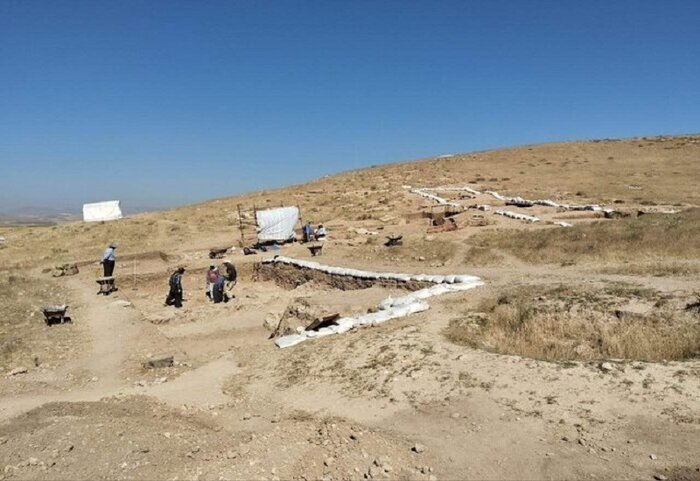Excavation sheds new light on Mannai culture

TEHRAN – A recent archaeological work has shed new light on the Mannai civilization, which flourished in northwestern Iran in the 1st millennium BC.
“The excavations focused on examining the architectural structures of the graves and the burial practices of the Mana civilization,” Shouresh Mohammadpour, who presides over Bukan’s cultural heritage directorate, said on Thursday.
Mohammadpour stated that the emergency excavations were conducted under the supervision of the Research Institute of Cultural Heritage and Tourism.
The primary objective was to gain new insights into the identity of the communities that once inhabited Qalaichi Hill, he said.
“Additionally, the boundaries and the protected area of the Qalaichi Hill have been determined.”
During the excavation, a number of significant artifacts were uncovered, shedding light on the rich history of the region.
Elsewhere in his remarks, Mohammadpour emphasized the necessity of establishing an archaeological museum in Bukan to showcase these important finds and preserve the region’s cultural heritage.
Situated in northwestern Iran, close to Lake Urmia, Qalaichi is renowned for its glazed bricks looted and smuggled out of Iran about four decades ago but were repatriated with the assistance of Swiss officials in December 2020.
In the 1970s, a farmer plowing at Qalaichi came across a decorated brick, probably from the columned hall of a citadel. This discovery led to extremely damaging illegal excavations, partly using a bulldozer. Eventually, in 1985, there was an official rescue excavation, but this was quickly abandoned because of an intensification of the Iran-Iraq War. There were then 14 more years of illegal digging until 1999, when there was another official excavation. But by this time, only small fragments of broken bricks were found.
Situated about nine air km northwest of Bukan, Qalaichi (or Ghalay-chi) is an ancient settlement so far yielded a large number of glazed objects. Some of which are monochrome and the others show complex compositions. The glazed objects from the regular excavations were curated in Urmia Museum and Tehran National Museum.
The artifacts are connected to the Mannai civilization, which flourished in northwestern Iran in the 1st millennium BC. Mannai, also spelled Manna, was an ancient country surrounded by three major powers of the time, namely Assyria, Urartu, and Media.
According to the Encyclopedia Britannica, the Mannaeans are first recorded in the annals of the Assyrian king Shalmaneser III (reigned 858–824 BC) and are last mentioned in Urartu by Rusa II (reigned 685–645 BC) and in Assyria by Esarhaddon (reigned 680–669 BC). With the intrusion of the Scythians and the rise of the Medes in the 7th century, the Manneans lost their identity and were subsumed under the term Medes.
AM
Leave a Comment